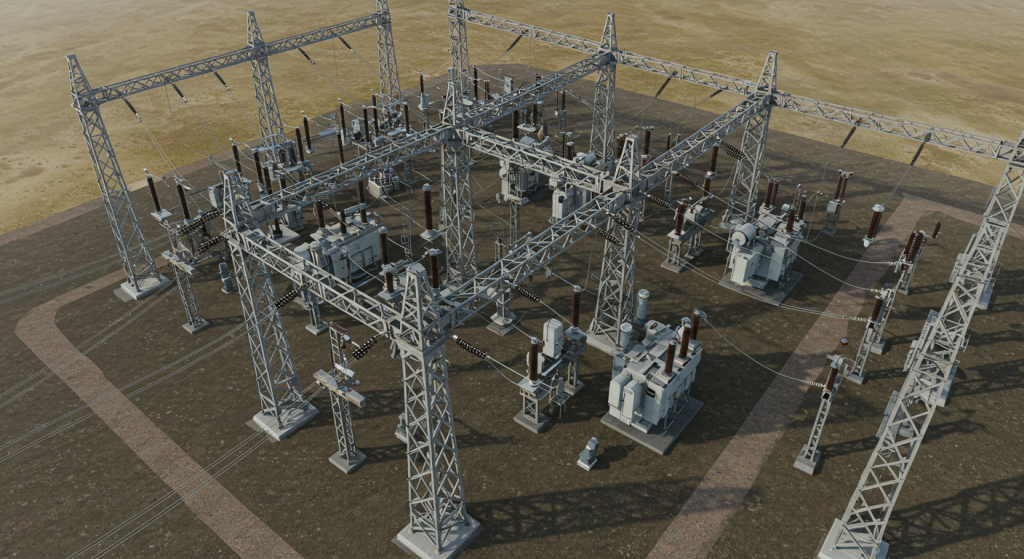HV/LV Substation Support Structure for Transmission Grid: A Guide
2025-07-21
Introduction
As an essential part of the electrical energy infrastructure, HV LV substation support structure for transmission grid guarantees reliability and safety in electrical power transmission. These structures are indispensable for grid expansion, smart cities, or even rural electrification projects. Moreover, the selection of materials, design, and even the supplier impacts system functionality. Here, we discuss everything revolving around the support structure for transmission grids, including materials, manufacturing, technical standards, and the reason why XY Towers is the supplier of choice in other regions.
What are Annotated and Embedded Subtitles?
As components of conventional substations, HV/LV substations serve various complex multifunctional systems. A typical substation is subdivided into several sections, each performing specific functions separately. As the name suggests, the power substation's marking is the main level of voltage transformation by the substation. Each of these sections contains important equipment associated with power distribution through transmission lines to consumers.
The key components that are included within these systems are:
• Circuit breakers
• Power transformers
• Busbars (rigid/flexible)
• Isolators
• Infrared insulators
• Current and voltage transformers
The frameworks are built with hot-dip galvanized steel, which protects against corrosion and extreme weather. The frameworks hot-dipped with galvanized steel are mechanically stable and safe in operation for diverse grids.
Support structures vary for each project and need to take into consideration load, wind, seismic zone, class of voltage, and even local regulations like IEEE 605 and IEC 61936-1. Earthing and grounding are also required for HV/LV Support Structures and must be safe for operation.
Safe installation of power equipment is essential for performance and reliability in urban and rural networks, substations, and even in renewable energy plants. With that said, HV/LV Support Structures are critical.
Substation Support Structure Types 1
Gantry Structures For vertical clearance and overhead clearances to enable incoming/outgoing lines. Equipment Support Frames for various isolators, as well as transformers, CTs, PTs, and breakers. Busbar Support Frames for rigid and flexible busbar systems. Cable Trays and Raceways Supporting LV cables routed across the yard.
Substation Support Structure Types 2
Key Materials in Fabrication
Hot-dip galvanized steel framework provides enhanced durability against rust, UV rays, and other harsh weather pollutants.
Metal Mild Steel & Pre-Engineered Profiles
CNC machines guarantee consistent quality across all beams.
Welded & Bolted Assemblies
Ensures strength and modularity for the structure.
Anti-Rust Surface Treatment
Prolongs the lifecycle of the equipment, especially in humid coastal areas.

Why Hot-Dip Galvanized Structures are Preferred?
For supporting HV/LV substations, the hot dip galvanization boundary layer is not merely a protection layer. It fundamentally optimizes operational value over the entire lifespan of the structure.
• Requires Little to No Upkeep
In contrast to untreated or painted steel, galvanized components have negligible upkeep. This translates to lower maintenance disruptions, operational costs, and longer intervals between inspections.
• Exposed to Extreme Conditions
From the desert that scorches with heat to coastal regions drenched in humidity, galvanized steel resists rust and moisture, as well as chemical exposure. Such strength is highly beneficial in extreme environmental conditions for transmission grids.
• Strengthens Reliability
Having a strong support system helps to keep critical components securely in place, such as transformers and busbars. This bolsters the reliability as well as the uptime of the grid.
Cost-Effective for Lifecycle Performance
Galvanizing may incur an additional expense early on, but it is more affordable over the long run due to reduced repainting, repairs, and replacement costs.
Hot-dip galvanized structures demonstrate that durability equals dependability in the context of infrastructure power. Thus, they are dependable and long-lasting.
Structural Engineering & Design Standards
The support structures of all HV/LV substations are compliant with:
- IEC 61936-1 – General requirements for substations
- IEEE 605 – Guide for the design of substation structures
- ISO 9001 – For factory production control
- Seismic & Wind Load Calculations – Region-specific design verification
Applications of HV/LV Substation Support Structures
- National Grid Transmission Lines
- Renewable Energy Substations (Solar/Wind)
- Industrial Parks and SEZs
- Urban Distribution Networks
- Rural Electrification Programs
- Railway & Metro Electrification Projects
Customization & Project-Specific Solutions
XY Tower provides fully tailored project-specific solutions, which include:
- Height, width, and base plate dimensions
- Static and dynamic load capacity tuning
- Pre-drilled anchor bolt layouts
- Lifting lugs, anti-vibration brackets, busbar mounts
- Wind/seismic zone adaptation
Safety Features & Certifications
- Insulation clearance compliance
- Grounding and earthing frames
- Lightning protection support
- Anti-climb Live yard safety
- ISO 9001, ISO 14001, and IEC conformity
Why Choose XY Tower?
Selecting the proper partner for your HV/LV substation support structure is essential. With over a decade in the industry, XY Tower brings exceptional precision and reliable service on every project. With over 200 completed transmission and distribution (T&D) projects, our portfolio tells a story of trust gained over the years.
- We operate a state-of-the-art hot-dip galvanizing plant which provides corrosion protection as per international standards, including ASTM A123. Our workshop is furnished with CNC machines, which give us the capability to cut, drill, and weld steel parts to tight tolerances.
- Small rural electrification projects and 500kV grid expansions are executed using tailored steel solutions that meet specific voltage, seismic, and climatic conditions. Our clients enjoy a simplified execution framework from design to delivery due to our turnkey approach.
- XY Tower is the preferred supplier for utilities in Pakistan, Central Asia, and Africa for their power infrastructure. With each structure, we provide engineered documents, quality assurance, life-cycle value analysis, and sustain strong commercial relationships.
Contact XY Tower Today to power your next transmission grid project with unrivaled structural integrity while ensuring compliance and confidence.
Environmental & Safety Commitments
XY Tower integrates business sustainability and safety into the workplace as part of its operational excellence.
• Mandatory PPE and safety drills for all staff at regular intervals.
• Reduction of water and energy waste during manufacturing processes.
• Reduction of environmental impact through scrap management and steel recycling.
• Adherence to ISO 14001 environmental standards for sustainable practices.
Conclusion
In building a reliable and scalable electrical infrastructure, selecting the appropriate HV/LV substation support structure for the transmission grid is very important. XY Tower stands out for your grid project when it comes to corrosion resistance, custom engineering, certified compliance, and unmatched value. If you need a partner with trusted credentials, technical know-how, and an ISO certification, turn to XY Tower. The strength of your grid will only be as good as the supportive structure.

Hey, I’m Chunjian Shu
"X.Y. Tower: Reliable, innovative solutions for high-quality towers and electrical equipment with professional service.
